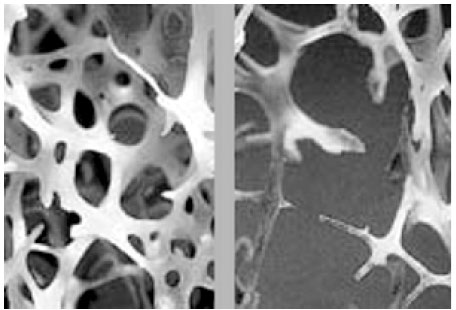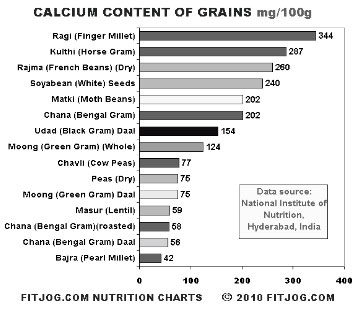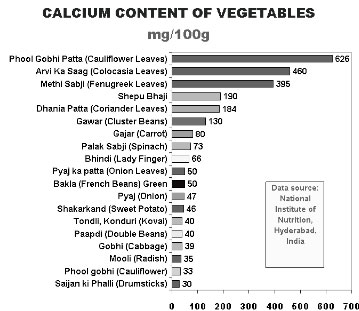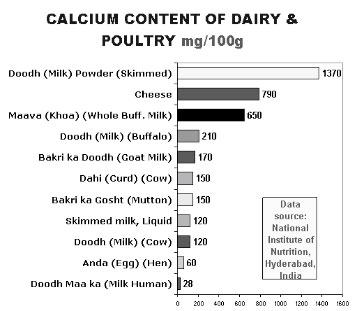Manjit Saluja
Normal Bone/Osteoporotic bone

Osteoporosis is the thinning of the bones.
Due to which bones become fragile & fracture
easily. Bone loss begins in the later years of life –
usually after the age of 40. This process is
accelerated in women at the time of menopause.
This is part of the normal aging process. For some
individuals the loss is high & results in fragile
bones. Fragile bones increase the risk of fracture.
It is upto you to prevent the risk of developing
fragile bones by a nutritious & healthy diet which
would keep your bones healthy & strong.
The World Health Organization (WHO)
defines osteoporosis as a skeletal disorder
characterized by compromised bone strength
predisposing a person to an increased risk of
fracture. As there are no symptoms of
osteoporosis it is also referred as the silent
disease.
Several medicines are used to treat and
prevent Osteoporosis. Treatment is focused on
controlling and slowing the bone loss process.
Besides medicines, diet plays a important role in
controlling and preventing bone loss. This article
focuses on Diet and Lifestyle
modifications which can be
incorporated in your daily
schedule.
Nutrients that look after
bone health:
Calcium: –
Calcium is responsible
for the health of the bones.
Calcium deficiency leads to osteoporosis.
Calcium not only strengthens bones and teeth but
also aids in the smooth functioning of muscles
and nerves. As our body does not manufacture
calcium it is essential that we get required amount
of calcium through our diet.
Diary products are a good source of
calcium. Milk, curds, Cheese, Paneer
are some of the most popular
sources of calcium. Some leafy
vegetables & fruits are also a good
source of calcium , including Soya ,
almonds.
If you are not milk loving [which most of us
are] or are allergic to milk which is termed as
lactose intolerance, you may include curds,
paneer in your daily diet. Grains are also a
popular source of calcium
especially Ragi.
Vitamin D:
Vitamin D also plays an
important role in building our
bone
health. The vitamin D
requirement of our body is
made available to us in a
very simple way by getting at
least 15 mins a day of sun
exposure. But in these
modern times most of us
spend the sunny hours
inside the house, offices,
shopping malls, hence the lack to sun exposure. Deficiency in vitamin D
results in weakening and softening of the bones.
The dietary source of vitamin D is eggs, curds and
soy products such a Tofu.
Proteins:
Protein also plays a crucial role in bone
health. The best protein sources are chicken and
eggs. For vegetarians, beans, pulses, nuts,
legumes and curds are popular.
Fruits and Vegetables:
Regular
consumption of Fruits
and vegetables has a
positive effect on your
overall health, as they
are low in calories with
more of fiber and
antioxidants.
Nutrients hampering bone health are:
Alcohol:
Studies have proved that consuming
alcohol is a deterrent to bone health
Salt :
High salted (sodium) foods hinders calcium
absorption. Avoid foods with high sodium, salt
content such as pizza’s, burgers, fries, chips &
salted nuts.
Only lifestyle changes are not sufficient to
prevent osteoporosis.
Certain risk factors for osteoporosis which
cannot be changed are :
Getting older
Being a woman
Having a family history of osteoporosis
Certain risk factors are with in our control
Avoid smoking
Reduce alcohol consumption
Have an active lifestyle with daily exercise
Good nutritious diet
[Source – National Inst of Health]
Some of the suggestions for preventing and
controlling Osteoporosis are:
Incorporate atleast 15-20 mins of physical
exercise daily like walking
Sun exposure daily for 5 – 1 0 mins
A well balanced diet including fruits & vegetables
Consuming dairy food products daily
Reduce salt intake
In some cases you may be advised to take a
calcium supplement as prescribed by your
doctor.
And above all maintain a healthy weight and
a positive attitude.
The best way to prevent osteoporosis is
to maximize bone density during our growth
years – ideally during adolescence and the
20s. However it is never too late to start. So
begin today…..



